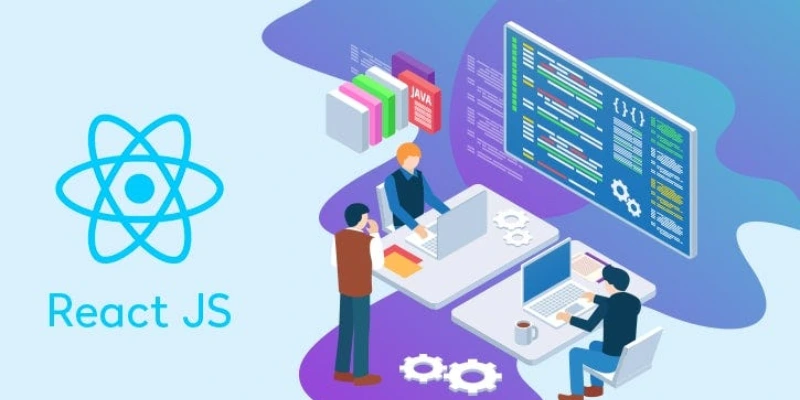If you’ve ever wondered how modern websites feel so fast, responsive, and seamless—chances are, they’re powered by React JS. It’s one of the most popular JavaScript libraries today, known for building dynamic, interactive, and scalable web applications. Whether you're a developer or a business owner looking to build a high-performing site, React JS is likely the technology you’ve been hearing about.
In fact, if you're based locally, joining a React JS Training in Chennai could be your gateway into building advanced, real-world web applications with confidence and clarity.
Why React JS Is So Popular for Web Development
Let’s begin by understanding why React JS is so popular. First created by Facebook, it has grown into a developer-favorite for several reasons:
- Component-based structure: Developers can build isolated features and reuse them across different parts of the application.
- Blazing-fast updates: Thanks to the virtual DOM, React only updates parts of the page that actually change, improving speed and performance.
- Large community & ecosystem: Thousands of ready-to-use packages, tutorials, and updates make development easier.
Because of these features, React JS website development has become a gold standard for startups, enterprises, and freelancers alike.
Dynamic Websites: What Makes React Ideal?
Unlike static sites where content rarely changes, dynamic websites update content based on user interactions, inputs, or real-time data. This is where React shines. When you’re building a website with React, you’re not just creating a webpage—you’re developing an experience.
React allows developers to create fluid user interfaces that respond instantly without requiring full-page reloads. Think of social media feeds that update instantly, dashboards that fetch live data, or e-commerce carts that update in real time. All of these are possible—and easier—with React.
Breaking Down a React Website: The Big Picture
Let’s simplify how a React website functions behind the scenes, without diving into technical jargon.
1. Component-Based Architecture
In React, your entire website is broken down into building blocks called components. Think of them as LEGO pieces—each one doing a small job, like showing a header, a product listing, or a button. These blocks can be reused throughout your website to maintain consistency and reduce coding time.
2. State Management
React has a smart way of handling “state,” which means storing and managing data that can change over time. When users click something, submit a form, or filter a product list, the page updates instantly—without needing to refresh.
3. Routing for Multi-Page Feel
Although React apps technically operate on a single HTML file, they behave like multi-page websites using something called routing. Users can jump between sections like Home, About, or Contact—and it feels just like navigating a traditional website.
4. Real-Time Interactions
Need to fetch live updates or integrate with APIs? React does it smoothly. Whether it's stock prices, weather updates, or chat messages, React supports real-time communication, making your site feel alive.
The Performance of a React App
One of the most significant reasons for choosing React is the performance of a React app. It’s built for speed. The virtual DOM ensures that only necessary parts of the page update, so the user experience remains seamless. This leads to quicker load times, better SEO potential (when combined with the right tools), and lower bounce rates—making it perfect for both users and search engines.
Career and Business Edge with React
As React continues to dominate front-end development, professionals are seeking structured learning paths to get ahead. This is where Corporate Training in Chennai is playing a vital role. Companies are upskilling their tech teams with React to deliver faster, scalable web solutions.
React developers are in high demand, and businesses that invest in modern web development gain a competitive edge. If you're running a business, integrating React into your digital strategy could be a smart move.
What Makes React Future-Proof?
The future of React JS looks promising. It's actively maintained, widely adopted, and constantly evolving. Features like concurrent rendering, React Server Components, and integration with frameworks like Next.js are taking React to new heights.
It’s not just a tool for building websites—it’s a long-term ecosystem that continues to push the boundaries of what the web can do.
The Role of Component Lifecycle in React
To use React efficiently, it's important to understand the ReactJS Component Lifecycle. Each component in React has its own lifecycle—like when it appears on the screen, updates with new information, or is removed. Understanding this flow helps developers control when data is fetched, when animations play, and how user interactions are handled smoothly.
For non-developers, just know this: lifecycle control ensures your website behaves intelligently without unnecessary delays or glitches.
Why React Is the Right Choice for Modern Websites
React isn’t just trendy—it’s practical. It enables developers to:
- Create rich user experiences
- Keep sites responsive across devices
- Integrate smoothly with other tools and APIs
- Optimize websites for better engagement and ROI
When building or upgrading your digital presence, opting for a react js website is a forward-thinking decision.
For individuals aiming to enter the tech space, joining a Training Institute in Chennai can provide a structured environment to master React, build projects, and get job-ready. It’s the fastest way to transform from a learner to a professional developer.
Whether you're planning to revamp your business site or begin a career in web development, learning how to build dynamic websites using React JS is an investment in the future. Its speed, scalability, and community support make it a leading choice in today’s development world.
So, are you ready to build your first React JS website? With the right learning path, guidance, and hands-on practice, it’s more achievable than ever.


